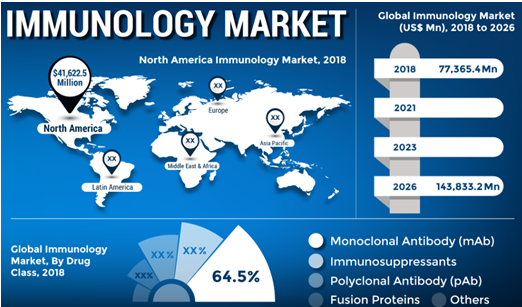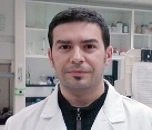Sessions/Tracks
Virology is part of the science that essentially governs the study of the science of infectious and viral diseases, primarily in the placement of viruses, natural chemistry, physiology, science, biology, development, and clinical practice of infectious diseases. In recent years, there have been some of the most constant challenges on the planet, including infectious diseases such as HIV and HPV, which are often experts in some of the major persistent relapses like Ebola, Zika and Covid. To test. Therefore, it is clear that the world of virologists should be more dynamic and refreshed. Infectious diseases also cause persistent illness in plants and pets. Infectious diseases can contaminate all living things. Infectious diseases are small pathogens, intracellular pathogens, and cannot grow outside a large number of cells. Infectious diseases differ from microorganisms in their unusual dependence on host cells.
Viral evolution is a branch of evolutionary biology and virology that specifically deals with viral evolution. Virus production times are short, and mutation rates for many viruses, especially RNA viruses, are relatively high (order of one or more mutations per round of genome and replication). This increased mutation rate, combined with natural selection, allows the virus to adapt rapidly to changes in their host environment. In addition, most viruses produce many offspring, so the mutated gene is quickly passed on to many offspring. The possibility of mutation or evolution varies depending on the type of virus (double-stranded DNA, double-stranded RNA, single-strand DNA, etc.), but the risk of mutation is high for the virus as a whole.
Related associations and societies
American Society for Virology, Australasian Virology Society, Max Planck Society, Brazilian Society for Virology, Canadian Society for Virology, German Society for Virology, Italian Society for Virology, Spanish Society for Virology, Swedish Society for Virology, Viruses: National Multiple Sclerosis Society, Infectious Diseases Society of America.
Track --02: Virus Structure and Classification
Viruses come in a variety of shapes and sizes, but they are the same and different for each virus family. In general, the morphology of the virus is divided into four groups: filamentous, isometric (or icosahedron), envelope, and head and tail. Filamentous viruses are long and cylindrical. Many plant viruses, including TMV (tobacco mosaic virus), are filamentous. Isometric viruses, like poliovirus and herpesvirus, are almost spherical. Envelope viruses have a membrane that surrounds the capsid. Animal viruses such as HIV often have an envelope. The head and tail viruses infect bacteria. It has a head shape resembling an icosahedron virus and a tail shape resembling a filamentous virus. Many viruses use certain glycoproteins to attach to host cells via molecules on the cell called viral receptors. For these viruses, attachment is a prerequisite for later penetration into the cell membrane so that replication can be completed within the cell. Receptors used by viruses are molecules normally found on the cell surface and have unique physiological functions. The virus has only evolved to use these molecules for its own replication.
Related associations and societies
Canadian Society for Virology, German Society for Virology, Italian Society for Virology, Spanish Society for Virology, American Society for Virology, Australasian Virology Society, Max Planck Society, Brazilian Society for Virology, Swedish Society for Virology, Viruses: National Multiple Sclerosis Society, Infectious Diseases Society of America.
Track -03: Bacterial and Fungal Diseases
Bacteria are microscopic unicellular organisms. They are one of the earliest known life forms on Earth. There are thousands of different types of bacteria, which inhabit every conceivable environment around the world. Some are suspended in the air, while others are most common in water, soil, plants, animals, and even humans. Many strains of bacteria are harmless, and some are even useful, such as those found in the human gastrointestinal tract to aid digestion and produce vitamins. Few cause illness in humans (less than 1% of all bacterial species). Some bacteria are extremely dangerous and can cause salmonella, pneumonia, or meningitis.
When fungi invade tissues, they can cause illnesses that can be localized to the skin, spread to tissues, bones, or organs, or affect the entire body. Symptoms vary depending on the area affected, but include rashes and vaginal infections that lead to abnormal secretions. Treatment includes antifungal drugs.
Related associations and societies
Brazilian Society for Virology, Swedish Society for Virology, Viruses: National Multiple Sclerosis Society, Infectious Diseases Society of America, Canadian Society for Virology, German Society for Virology, Italian Society for Virology, Spanish Society for Virology, American Society for Virology, Australasian Virology Society.
Track -04: Emerging and Re-emerging Infectious Diseases
In the 21st century, newly identified pathogens, primarily zoonotic or vector-borne infectious pathogens, consistently and constantly threaten public health, causing fatal outbreaks of global concern. "Emerging infectious disease" is a term used to describe a previously unknown or known infection that can cause an outbreak. In addition, new infections include those that are already present in the environment but are caused by a pathogen that has not previously caused the infection or has provided a selective benefit to infection in the new host species. Viruses, new viruses such as Severe Acute Respiratory Syndrome (SARS), Middle East Respiratory Syndrome Corona Virus (MERS) and Bird Influenza Virus are serious public health threats and are a global problem. In this chapter you will learn the basic terms of infectious epidemiology and emergent virus outbreaks.
Related associations and societies
Canadian Society for Virology, German Society for Virology, Italian Society for Virology, Spanish Society for Virology, Swedish Society for Virology, American Society for Virology, Australasian Virology Society, Max Planck Society, Brazilian Society for Virology.
Track -05: Coronavirus (COVID-19)
Covid's disease (COVID19) is a fascinating disease caused by the newly discovered Covid. This includes the vast number of infectious diseases that cause respiratory and intestinal disorders in living organisms and humans, such as Middle East respiratory illness and severe acute respiratory syndrome. Covids is a zoonotic disease. That means they are communicating between creatures and people. Definitive research revealed that SARSCoV was transmitted from civets to the population and MERSCoV was transmitted from dromedary to the population. Some known Covids have spread to creatures that are not yet contaminated by humans.
Related associations and societies
American Society for Virology, Australasian Virology Society, Max Planck Society, Brazilian Society for Virology, Canadian Society for Virology, German Society for Virology, Italian Society for Virology, Spanish Society for Virology, Swedish Society for Virology, Viruses: National Multiple Sclerosis Society, Infectious Diseases Society of America.
Track -06: Pathogenicity and Virulence (Host-Parasite Interaction)
Since the days of Pasteur and Koch, the concept of pathogenicity and pathogenicity has determined the perception of the harmful effects of microorganisms. These concepts have led to the recognition and identification of many causative agents, providing natural and synthetic agents that are effective in the treatment and prevention of diseases. Many complex attributes of microbial anatomy and physiology have been obscured by reliance on pure culture techniques. For example, bacterial organelles and the production of extracellular polysaccharides allow microorganisms to interact with mammalian glycolytic enzymes and specific receptors. In addition, through the use of therapeutic agents, choices help the progression of environmental organisms to members of the intimate human biosphere, which can impede patient recovery. These factors further underscore the central importance of the host's response to infection. Parasitism, on its negative side, not only damages the host's organs and cells, but also explains the emergence of "new" infections. You may encounter more subtle infections that reveal the interaction of parasites with host cell nucleic acids in the form of genomic parasites.
Related associations and societies
Canadian Society for Virology, German Society for Virology, Italian Society for Virology, Spanish Society for Virology, American Society for Virology, Australasian Virology Society, Max Planck Society, Brazilian Society for Virology, Swedish Society for Virology, Viruses: National Multiple Sclerosis Society, Infectious Diseases Society of America.
Microbiology is a science in the placement of science dealing with the study of microorganisms (bacteria, (archaea), small growth, protozoa, algae, and infectious diseases). In the field of microbiology, their taxonomy, morphology, physiology, natural chemistry, further development, contributions to the environment, and beyond, their potential for meaningful use are considered. Bacteriology is a branch of microbiology.
Pathology is the study of the causes and effects of illness and injury. The term pathology also refers to the study of common illnesses and includes a wide range of biological research fields and medical practices. However, in the context of modern medicine, the term is more to describe procedures and tests that fall into the modern medical field of "general pathology", which includes many different but interrelated medical disciplines, including diagnosis. Often used narrowly, diseases usually caused by analyzing samples of tissues, cells, and body fluids. By convention, "medical condition" may also refer to the prediction or actual progression of a particular disease (more appropriate in this case, such as the statement "many different forms of cancer have different medical conditions".
Related associations and societies
Brazilian Society for Virology, Swedish Society for Virology, Viruses: National Multiple Sclerosis Society, Infectious Diseases Society of America, Canadian Society for Virology, German Society for Virology, Italian Society for Virology, Spanish Society for Virology, American Society for Virology, Australasian Virology Society.
Track-08: Veterinary Virology
Veterinary virology is the study of viruses that cause diseases and disorders in animals. It is an important area of veterinary medicine. A fully infectious virus is called Viron. The genome of a virus is smaller than the genome of prokaryotic or eukaryotic cells, and most viruses carry nucleic acids in a single molecule. There are two types of viral genomes, single-stranded and double-stranded, and the virus may contain either RNA or DNA. Due to these viruses are of three main groups based on their nucleic acid composition: DNA viruses, RNA viruses and viruses.
Related associations and societies
Canadian Society for Virology, German Society for Virology, Italian Society for Virology, Spanish Society for Virology, Swedish Society for Virology, American Society for Virology, Australasian Virology Society, Max Planck Society, Brazilian Society for Virology.
Track-09: Molecular Virology
The viral genome contains all the information needed to initiate and complete the cycle of infection within a sensitive and tolerant host cell. The infection cycle involves attachment and invasion, viral mRNA and protein production, genomic replication, and finally the assembly and release of new particles. The viral genome encodes from just one protein to over 100 proteins. What is present in the mature viral particles virions is also known as structural proteins. By comparison, the viral genome involved in the assembly, replication, and modification of the host's innate response to infection is called a nonstructural protein. Virtually all DNA viruses that infect humans and animals contain double-stranded DNA. The exceptions are the parvoviridae (parvovirus B19, adeno-associated virus, etc.) and the circovirus family, which includes transfusion transmitted (TT) viruses that may be associated with the development of some cases of hepatitis.
Related associations and societies
American Society for Virology, Australasian Virology Society, Max Planck Society, Brazilian Society for Virology, Canadian Society for Virology, German Society for Virology, Italian Society for Virology, Spanish Society for Virology, Swedish Society for Virology, Viruses: National Multiple Sclerosis Society, Infectious Diseases Society of America.
Track-10: Drug Discovery and Development ((r-DNA Technology)
Clinically approved antivirals are currently only available for 10 of the more than 220 viruses known to infect humans. The outbreak of SARSCoV2 highlighted the urgent need for compounds that could be rapidly mobilized to treat recurrent or new viral diseases during vaccine development. It reviews the current state of antiviral therapy with a focus on RNA viruses, highlights strategies for the discovery of antiviral drugs, and discusses challenges, solutions, and options for accelerating drug discovery. The development of antiviral therapies requires a basic understanding of the chemical biology of the virus, especially its interaction with host cells. As essential parasites, all viruses rely on the cellular processes of the host cell and therefore share key characteristics of the infectious life cycle. This overview focuses on EBOV and SARSCoV2. These are single-strand RNA viruses that have negative (-) and positive (+) meanings, respectively.
Related associations and societies
Canadian Society for Virology, German Society for Virology, Italian Society for Virology, Spanish Society for Virology, American Society for Virology, Australasian Virology Society, Max Planck Society, Brazilian Society for Virology, Swedish Society for Virology, Viruses: National Multiple Sclerosis Society, Infectious Diseases Society of America.
Comorbidity is the presence of one or more additional diseases that often occur at the same time as the primary disease. Comorbidities represent the effects of other medical conditions that an individual patient may have, apart from the major condition of interest, and can be physiological or psychological in nature. In the context of mental health, comorbidities often refer to co-existing disorders such as depression and anxiety disorders. Comorbidity may indicate either co-existing but independent disease with other or related illnesses. The latter meaning of the term creates some overlap with the concept of complications. For example, in long-standing diabetes, it is not easy to determine whether coronary artery disease is an independent complication or a diabetic complication. Both diseases are highly multivariate and are likely to have both simultaneity and outcome aspects. The same applies to comorbidities during pregnancy.
Related associations and societies
Brazilian Society for Virology, Swedish Society for Virology, Viruses: National Multiple Sclerosis Society, Infectious Diseases Society of America, Canadian Society for Virology, German Society for Virology, Italian Society for Virology, Spanish Society for Virology, American Society for Virology, Australasian Virology Society.
Herbs are plants or parts of a plant that are used for their aroma, taste, or therapeutic properties. Chinese herbs are a type of dietary supplement. They are sold as tablets, capsules, powders, teas, extracts, and raw or dried plants. People use herbs to try to maintain or improve their health. Many people believe that products labeled as "natural" are always safe and good for them. This is not always true. Chinese herbs do not need to be tested like medicines. Some herbs like comfrey and ephedra can cause serious harm. Some herbs may interact with prescription and over-the-counter medications. If you are thinking of using Chinese herbs, first find out about it from a reliable source. Be sure to tell your doctor about all the Chinese medicines you are taking.
Related associations and societies
Canadian Society for Virology, German Society for Virology, Italian Society for Virology, Spanish Society for Virology, Swedish Society for Virology, American Society for Virology, Australasian Virology Society, Max Planck Society, Brazilian Society for Virology.
Biotechnology is a broad field of biology that uses biological systems and organisms to develop or manufacture products. Some tools and applications often overlap with related scientific disciplines. From the late 20th century to the early 21st century, biotechnology expanded to include new and diverse sciences such as genomics, recombinant genetic engineering, applied immunology, drug therapy and the development of diagnostic tests. The term biotechnology, first used by Karl Ereky in 1919, refers to the production of products from raw materials with the help of living organisms.
Related associations and societies
American Society for Virology, Australasian Virology Society, Max Planck Society, Brazilian Society for Virology, Canadian Society for Virology, German Society for Virology, Italian Society for Virology, Spanish Society for Virology, Swedish Society for Virology, Viruses: National Multiple Sclerosis Society, Infectious Diseases Society of America.
Viral nanotechnology is the use of viruses as a source of nanoparticles for biomedical purposes. The virus is composed of a genome and a capsid. Some viruses have envelopes. Most virus capsids have a diameter of 20500 nm. Due to its nanometer size, the virus was considered to be naturally occurring nanoparticles. Viral nanoparticles were the subject of the fields of nanoscience and nanotechnology. Viruses can be thought of as pre-made nanoparticles. Many different viruses have been studied for different uses of nanotechnology. For example, mammalian viruses have been developed as vectors for gene delivery, and bacteriophage and plant viruses have been used for drug delivery and imaging, vaccine and immunotherapy interventions.
Related associations and societies
Canadian Society for Virology, German Society for Virology, Italian Society for Virology, Spanish Society for Virology, American Society for Virology, Australasian Virology Society, Max Planck Society, Brazilian Society for Virology, Swedish Society for Virology, Viruses: National Multiple Sclerosis Society, Infectious Diseases Society of America.
Vaccines are biopharmacy that boosts immunity to certain diseases. Not only does it resemble a pathogenic microorganism, but it also contains certain active ingredients that stimulate the body's own immune system to recognize foreign active ingredients. Vaccines are dead or inactivated organisms, or purified products obtained from them. Whole biological vaccine Vaccine, recombinant vaccine, purified polymer as DNA vaccine. The immune system recognizes vaccines as foreign bodies, destroys them, and "remembers" them. Immunotherapy is a treatment that uses specific parts of a person's immune system to fight diseases such as cancer. This can be done in several ways. • Stimulate your immune system and work hard or wisely to attack cancer cells.
Related associations and societies
Brazilian Society for Virology, Swedish Society for Virology, Viruses: National Multiple Sclerosis Society, Infectious Diseases Society of America, Canadian Society for Virology, German Society for Virology, Italian Society for Virology, Spanish Society for Virology, American Society for Virology, Australasian Virology Society.
Viral oncology is a branch of oncology that deals with the treatment of tumors with viral particles. Although the region has received much coverage in recent years, the idea of using the virus as an oncolytic agent has existed since the early 1920s, and the correlation between the virus and remission has existed since the mid-19th century. Oncolytic viruses are viruses that specifically attack and kill cancer cells. This process is usually based on a genetically engineered virus that retains its toxicity in somatic cells, although it has lost the ability to replicate in somatic cells. Many of these cells are unable to infect somatic cells due to the loss or inactivation of genes that may suppress the intracellular stroke mechanism. Without these suppressive mechanisms, the virus can only go through a lysis cycle within cancer cells, making it an effective and efficient way to treat cancer.
Related associations and societies
Canadian Society for Virology, German Society for Virology, Italian Society for Virology, Spanish Society for Virology, Swedish Society for Virology, American Society for Virology, Australasian Virology Society, Max Planck Society, Brazilian Society for Virology.
Parasitology is a field of parasites and science dealing with parasites. Parasitism is a form of symbiosis in which one organism (called a parasite) benefits at the expense of another organism, usually belonging to a different species (called a host). Associations can also lead to host violations. An example of parasitism is the connection between the tapeworm and the vertebrate host.
Mycology is a study of fungi, including the genetic and biochemical properties of fungi, taxonomy, and human use as a source of burns, traditional medicine, food, and enceogenes, and risks such as toxicity and infection. Is the field of biology to study.
Related associations and societies
American Society for Virology, Australasian Virology Society, Max Planck Society, Brazilian Society for Virology, Canadian Society for Virology, German Society for Virology, Italian Society for Virology, Spanish Society for Virology, Swedish Society for Virology, Viruses: National Multiple Sclerosis Society, Infectious Diseases Society of America.
The microbial flora (from the ancient Greek μικρÏŒς (mikrós) "small" and βίος (bíos) "life") is usually a community of microorganisms that live together in a particular habitat. It was a characteristic microbial community with a variety of physicochemical properties that occupies a reasonably well-defined habitat. Therefore, the term not only refers to the microorganisms involved, but also includes their areas of activity increase.
The microbiome is composed of useful and potentially harmful microorganisms. Most are symbiotic (both the human body and the microbiota benefit) and some are pathogenic (favourable diseases). In a healthy body, pathogens and symbiotic bacteria coexist without problems.
Related associations and societies
Canadian Society for Virology, German Society for Virology, Italian Society for Virology, Spanish Society for Virology, American Society for Virology, Australasian Virology Society, Max Planck Society, Brazilian Society for Virology, Swedish Society for Virology, Viruses: National Multiple Sclerosis Society, Infectious Diseases Society of America.
The immune system protects the body from a variety of infections by producing antibodies and antigens by fighting harmful microorganisms. In this era, digital pathology has made tremendous progress through scanning body tissue samples and digital storage. There are several advanced techniques in pathology, but each technique has its own advantages and limitations.
Related associations and societies
Brazilian Society for Virology, Swedish Society for Virology, Viruses: National Multiple Sclerosis Society, Infectious Diseases Society of America, Canadian Society for Virology, German Society for Virology, Italian Society for Virology, Spanish Society for Virology, American Society for Virology, Australasian Virology Society.
Personal hygiene is a practice that people practice to manage their physical health. Happiness by cleanliness. Many people equate hygiene with "cleanliness", but hygiene is one. Personal habits, bathing, frequency of washing hands, Arrange your nails and change your clothes. This includes keeping the environment clean and pathogen free.
Related associations and societies
Canadian Society for Virology, German Society for Virology, Italian Society for Virology, Spanish Society for Virology, Swedish Society for Virology, American Society for Virology, Australasian Virology Society, Max Planck Society, Brazilian Society for Virology.
Track-21: Diagnosis and Treatment of Infectious Diseases
Infectious Diseases Diagnosis & Treatment is an open access journal that covers various aspects such as epidemiology, infectious diseases, symptomatic treatment, and their prevention. Infectious diseases are the invasion of organisms and body tissues by pathogens, their reproduction, and the reaction of host tissues, which are simply diseases caused by infectious diseases. Infectious disease diagnosis and treatment provides a unique platform to help collect and disseminate the latest scientific knowledge in diagnosis, management and treatment.
Related associations and societies
American Society for Virology, Australasian Virology Society, Max Planck Society, Brazilian Society for Virology, Canadian Society for Virology, German Society for Virology, Italian Society for Virology, Spanish Society for Virology, Swedish Society for Virology, Viruses: National Multiple Sclerosis Society, Infectious Diseases Society of America.
Track-22: Medicinal Chemistry
Medicinal chemistry is a field related to chemistry, especially synthetic organic chemistry, pharmacology, and various other biological fields, engaged in the design, chemical synthesis, and free market development of active pharmaceutical ingredients. The introduction of new powerful computing capabilities prompted this approach. Medicinal chemists need to perform these first important tasks in order to succeed in the discovery process. Identify lead molecules with the desired biological activity through new technologies such as success, combinatorial chemistry, and lead structure modification and optimization. Use of structure-activity analysis and optimized lead scale-up for further drug development process and efficacy testing.
Related associations and societies
Canadian Society for Virology, German Society for Virology, Italian Society for Virology, Spanish Society for Virology, American Society for Virology, Australasian Virology Society, Max Planck Society, Brazilian Society for Virology, Swedish Society for Virology, Viruses: National Multiple Sclerosis Society, Infectious Diseases Society of America.
Inflammation is an attempt by the body to protect itself. The purpose is to remove harmful stimuli such as damaged cells, irritants, pathogens and initiate the healing process. When there is inflammation, white blood cells and the substances they produce protect us from infections by alien species such as bacteria and viruses. However, in some illnesses such as arthritis, the body's defense system, the immune system provokes an inflammatory reaction when there are no foreign invaders to fight. In these diseases, known as autoimmune diseases, the body's normal protective immune system damages its own tissues.
Related associations and societies
Brazilian Society for Virology, Swedish Society for Virology, Viruses: National Multiple Sclerosis Society, Infectious Diseases Society of America, Canadian Society for Virology, German Society for Virology, Italian Society for Virology, Spanish Society for Virology, American Society for Virology, Australasian Virology Society.
Track-24: Food and Nutrition
For plants and animals, food is essential for survival. The plant is autotrophic. They prepare their own food and give some of it to other creatures. Animals are heterotrophic, but they cannot make their own nutrition and get it from other plants or animals. You make your own food and you rely on others for food. Plants need about 20 elements known as light, water, and essential elements to meet all biochemical needs. Some plants are unable to produce their own food and must obtain food from parasites or saprotrophic external sources. Some plants are mutualistic symbiotic symbionts, epiphytes, or carnivorous plants. Most animals get their nutrients by ingesting other organisms. The molecules required by animals are amino acids, lipid molecules, nucleotides and monosaccharides, and the foods that animals eat are composed of proteins, fats and complex carbohydrates. Animals convert these macromolecules into simple macromolecules that are essential for maintaining cell function. Digestion and absorption are required to convert ingested food into nutrients. During digestion, food particles are broken down into smaller components that are later absorbed by the body.
Related associations and societies
Canadian Society for Virology, German Society for Virology, Italian Society for Virology, Spanish Society for Virology, Swedish Society for Virology, American Society for Virology, Australasian Virology Society, Max Planck Society, Brazilian Society for Virology.
Track-25: Current Focus in Virology Research
Current studies of virology include studies of the mechanism of HIV replication and etiology. Diseases such as prion disease, Alzheimer's disease, and HIV1-related dementia. Other studies include chronic and latent infections caused by viruses such as Epstein-Barr and Kaposi's sarcoma-related herpesviruses and herpes simplex. Researchers are also studying virus-hosted interactions, as well as virus-induced cellular transformation mechanisms.Current studies of virology include studies of the mechanism of HIV replication and etiology. Diseases such as prion disease, Alzheimer's disease, and HIV1-related dementia. Other studies include chronic and latent infections caused by viruses such as Epstein-Barr and Kaposi's sarcoma-related herpesviruses and herpes simplex. Researchers are also studying virus-hosted interactions, as well as virus-induced cellular transformation mechanisms.
Related associations and societies
American Society for Virology, Australasian Virology Society, Max Planck Society, Brazilian Society for Virology, Canadian Society for Virology, German Society for Virology, Italian Society for Virology, Spanish Society for Virology, Swedish Society for Virology, Viruses: National Multiple Sclerosis Society, Infectious Diseases Society of America.
Track 26: Plant Virology
Over a hundred years of research on plant viruses has led to a detailed understanding of viral replication, movement, and host–virus interactions. The functions of vast viral genes have also been annotated. With an increased understanding of plant viruses and plant–virus interactions, various viruses have been developed as vectors to modulate gene expressions for functional studies as well as for fulfilling the needs in biotechnology. These approaches are invaluable not only for molecular breeding and functional genomics studies related to pivotal agronomic traits, but also for the production of vaccines and health-promoting carotenoids. This review summarizes the latest progress in these forefronts as well as the available viral vectors for economically important crops and beyond.
Related associations and societies
American Society for Virology, Australasian Virology Society, Max Planck Society, Brazilian Society for Virology, Canadian Society for Virology, German Society for Virology, Italian Society for Virology, Spanish Society for Virology, Swedish Society for Virology, Viruses: National Multiple Sclerosis Society, Infectious Diseases Society of America.
Market Analysis
The virology market is expected to reach $ 5,276.48 million by 2028, from $ 4,108.27 million in 2021. It is expected to record a CAGR of 3.6% from 2021 to 2028. Viruses such as the human immunodeficiency virus (HIV), influenza virus, decavirus, Ebola virus, SARSCoV2, and poliovirus infect large populations around the world. As the virus mutates and continues to evolve, drug resistance becomes a major challenge in the treatment of viral infections in humans and animals. The virus is transmitted through various media, depending on its type. For example, some viruses cause respiratory viral diseases such as influenza, colds, and respiratory follicles virus infections, which are transmitted through droplets produced by coughing and sneezing, while some gastrointestinal viral diseases. It is transmitted through direct contact with infected feces by people or contaminated food or water.
According to UNAIDS Global HIV & AIDS Statistics, more than 37.7 million people worldwide were infected with HIV in 2020. In February 2020, the International Commission on the Classification of Viruses (ICTV) declared a new coronavirus that made COVID 19 Severe Acute Respiratory Syndrome Coronavirus 2 (SARSCoV2). The severity of the COVID19 pandemic exacerbated it. For example, according to COVID19 tracker data from the Centers for Disease Control and Prevention (CDC), the 7-day case rate per 100,000 people in August 2021 was 299.4, with more than 164,952 new cases reported in the United States. .. In addition, according to the European Center for Disease Prevention and Control, the total number of cases of COVID19 reached approximately 36,307,572 in the European Economic Area (EEA) in August 2021. Therefore, this rising prevalence of viral infections is driving the growth of the virology market.

Virology Market: Segmentation
The virology market is categorized by product type into diagnostic tests such as DNA virus, RNA virus, prion diagnostic test and other viral tests. Based on the diagnostic test, hepatitis B, hepatitis C, HIV, human papillomavirus (HPV), and other tests (influenza, ebola, dengue, etc.) are estimated to have the largest market share in the world during the forecast period. Immunoprevention, active prophylaxis (vaccine), passive prophylaxis, antiviral chemistry (verifiers, antivirals, immune modulators), interferon (cytokines) are some of the methods used to combat viral infections.Immunopreventive therapies and antivirals are the fastest growing market segments during this estimated forecast period.
The viral market is divided into skin and soft tissue infections, respiratory infections, gastrointestinal and urinary tract infections, eye infections, sexually transmitted infections, and perinatal infections. In the global virology market, sexually transmitted infections, urinary tract infections, and respiratory infections are currently predominant compared to other types of applications. The virology market is divided into hospitals, clinics, laboratories, diagnostic centres, blood banks and pharmacies based on end users
Importance & Scope
Virology is the study of viruses. Studying viruses is important because it allows us to understand the various mechanisms that viruses use to replicate in cells. Therefore, it is possible to target those mechanisms without causing high toxicity to infected organisms. The fields of virology and genomics research have been closely linked for many years. The first whole genome sequenced was of viral origin-1977 Bacteriophage PhiX174. Since then, more viral genomes have been mapped and the human genome has become available, making it possible to detect viral-host interactions. Identify the infection. Therefore, this has become a complete record of potential antiviral targets investigated. The dramatic increase in research on rational drug design may be due to the advent of the HIV pandemic, resulting in the emergence of numerous antivirals and vaccines in clinical trials today. Virologists specialize in the study of the growth, development, structure, and properties of various viruses.
They isolate and culture important viruses in standard inhibitory media by controlling certain factors such as ventilation, humidity, temperature, and diet. The study here consists primarily of animal experiments and uses information from the host and viral genomes to infer the pathogenicity of the virus. Plant virology is a field of research on viruses and how they affect plants. These infectious diseases can have devastating effects on agriculture in developing countries. Until recently, the only microbial fauna that could be identified in complex communities (such as gut flora and seawater) were those that could be cultivated. Research in the 21st century will enable rapid sequencing of RNA and DNA to identify new biological families (including viruses). Examples of mixed population deep sequencing technologies found in respiratory secretions and gastrointestinal contents reveal a new family of viruses that are both pathogenic and non-pathogenic.
Global Immunology Market (USD$ Mn), 2018-2026
According to a report published by Fortune Business Insights, "Global trends and diseases by IMMUNOLOGY, market size, market share, and drug class (monoclonal antibodies (mAb), fusion proteins, immunosuppressants, polyclonal antibodies (pAb), etc.)" (By Rheumatoid Arthritis), Psoriasis-arthritis, psoriasis vulgaris, ankilos spondylitis, inflammatory bowel disease, prevention of organ rejection, etc.), distribution channels (hospital pharmacies, retail pharmacies, online pharmacies) and geography. The global immunology market is expected to grow over the next few years due to the high prevalence of immune disorders due to environmental factors. According to it, it is worth $ 77,365.4 million.
The global immunology market has the potential to grow in the coming years due to the high prevalence of immune disorders and the high demand for immunological drugs. The severity of immune disorders is becoming more and more conscious around the world. Various initiatives and advisory programs have been implemented by both governments and public authorities. This will increase the demand for immune drugs. In addition, increased efficacy of immunological drugs has contributed to improved patient outcomes, which has led to the subsequent growth of the global immunology market.

Top Research Institutions Associated With Virology and Immunology Research
Major Societies & Companies
Related associations :
Companies:














